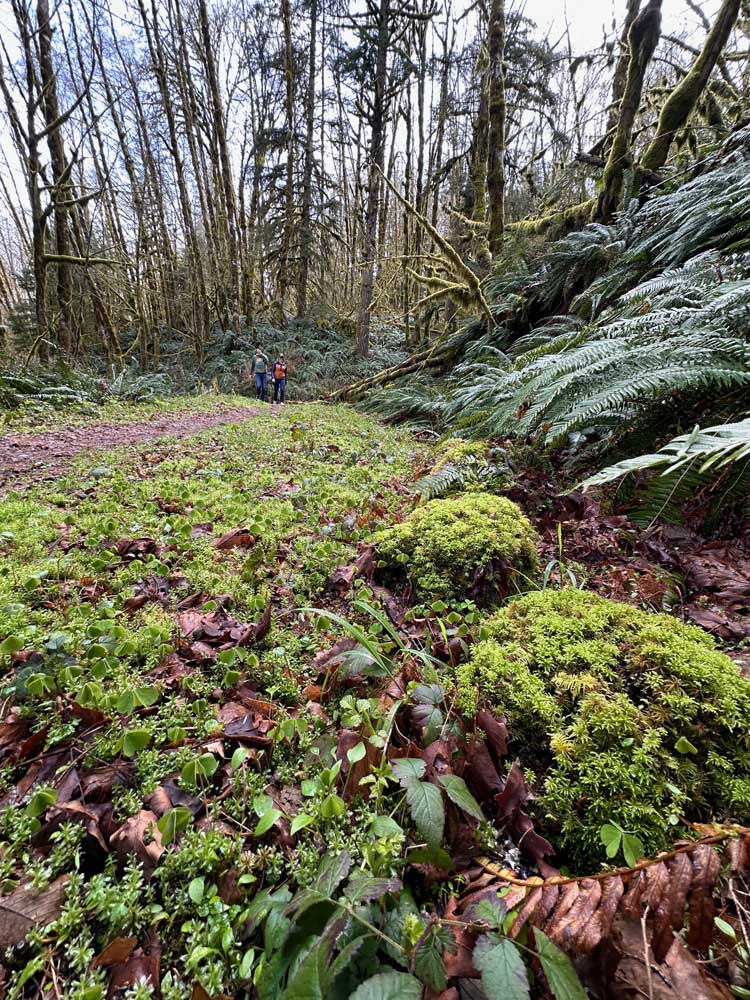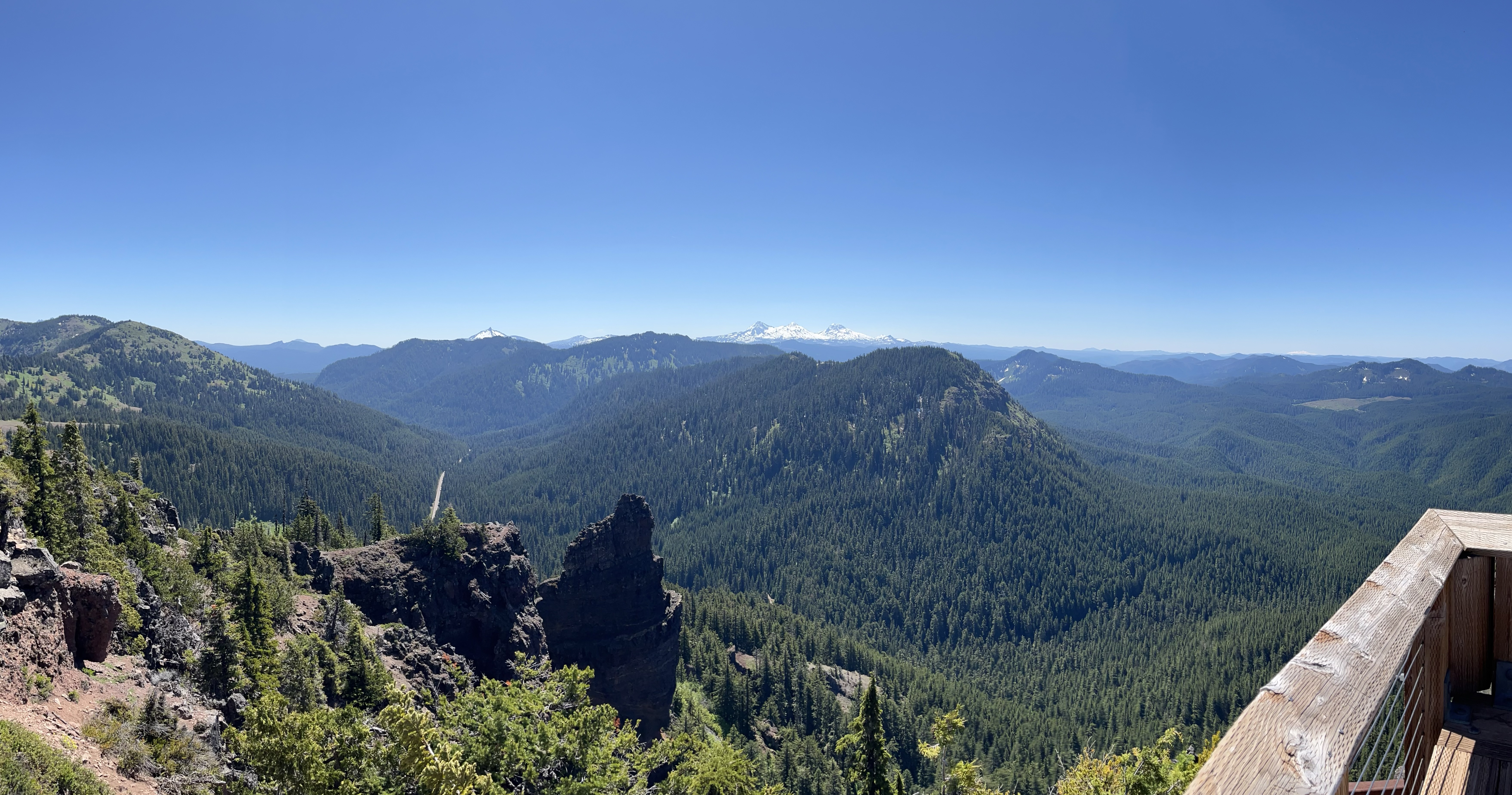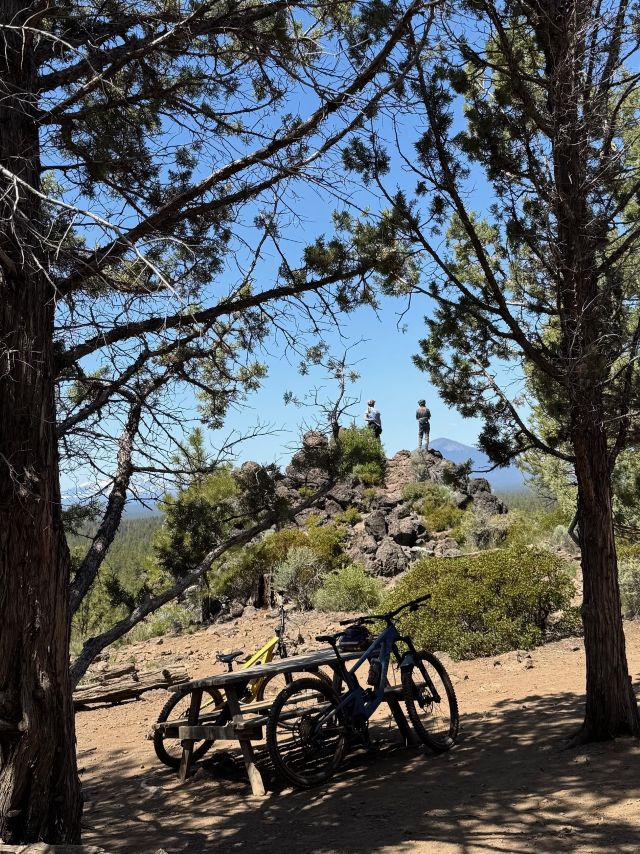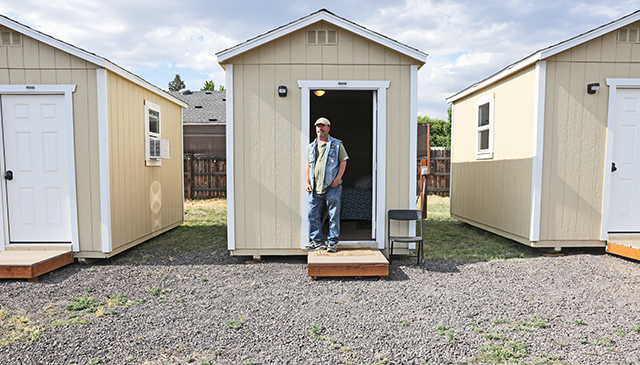Mix your cardio with your history on the Santiam Wagon Road
Published 6:30 am Friday, April 19, 2024

- Boulders placed more than a century ago (bottom right) demarcate where the old Santiam Wagon Road crossed the Old Cascades.
“A man on a good horse could make the 102-mile journey in four days,” announces a sign along the Santiam Wagon Road, about 30 miles east of Sweet Home.
The sign was referring to the now 2-hour car journey from Albany to Sisters. From 1865 until 1939, however, “driving over the mountain” involved a heckuva lot more than a long podcast and a water bottle. In the 19th century especially, it required nearly a week’s provisions of food, water, clothing and temporary shelter. And that’s if you’re a “man on a good horse.” Who knows what’s in store for you if you’re a man, woman, or family of four, perhaps driving a mediocre team of horses?
Luckily for me and my 21st century family, our Toyota Tacoma made the trip from Sisters to the Mountain House trailhead at the wagon road in under an hour. Situated about 36 miles west of Sisters just off of U.S. Highway 20, the trailhead is well hidden when you are driving from the east. The House Rock Campground on your left is a sign that you’re within a couple of miles of the left-hand turnoff to the trailhead.
If you arrive at the turnoff to Soda Creek Road on your right, however, you have gone too far. Simply u-turn, and look for the Santiam Wagon Road signs on your right, and park in the small lot by the pedestrian bridge blocked by a green gate.
Hiking on wagon road remains
At 4.7 miles round-trip, this out-and-back portion of the trail begins at the gated bridge, crosses the South Santiam River, and then skirts its south bank for more than two miles before reaching House Rock Campground. You have the option of exploring House Rock, House Rock Falls, and the cave underneath the rock itself, or you can continue on the wagon road for perhaps 20-plus more miles (snowdrifts permitting). Most of the original Santiam Wagon Road has been intentionally destroyed to make way for the highway, ruined by ATVs, or consumed by the forest. The Mountain House section is the most intact section of the wagon road that remains.
Along the way, untrained eyes may not discern that this was once part of the primary freight route between Albany and Ontario. Tall maple trees dot the hillside, and their roots have overtaken the road in many places. Still, signs of the old route’s use remain; moss-covered stones line the side of one portion, their human placement made clear by the linear pattern in which they sit. Today this is a lush, mossy hike that is shaded in no small part by old-growth cedar and hemlock trees. The trail is well-defined, and largely clear, save for a couple of blowdowns.
U.S. Highway 20 eventually replaced the old wagon route in 1939, closely following its trajectory along the river. In places, however, the trail takes you far enough from the highway that the river is the only white noise you hear. Amid discussions of the wisdom of our footwear, we crossed multiple creeks and tributaries that feed the Santiam. My wife and I countered our children’s complaints with reminders that 1880s children probably didn’t whine that much, and they had experienced PlayStation 4 deprivation for a much longer period.
As if my transformation into my father wasn’t already complete, I made sure to force the family to stop and thoroughly review the kiosk near the trail’s turnoff to House Rock. In addition to the “man on a good horse” information I’ve already shared, we learned that early travelers made stops along the wagon road at Fish Lake, Cache Creek and Camp Polk, even paying tolls until 1915. Horses, wagons, Model-Ts and small herds of cattle navigated this route. I imagined broken axles, dead oxen and dysentery (among other aspects of the Oregon Trail computer game).
In reality, this was a route created by ranchers and businessmen, thanks to a government grant. The State of Oregon purchased the road in 1925, and abandoned it in 1930.
House rock, swimming holes
Back to 2024: It is worth the time to scramble down the hillside to House Rock and cross the footbridge to House Rock Campground. The campground’s rocky beach area is a great respite for dogs, grumbling children and their long-suffering parents. The river was too chilly for a dip in early April, but once the spring runoff subsides, the swimming holes are reported to be a divine summer destination. It is also a stone-skipper’s delight.
House Rock itself more resembles Apartment Rock, and no, that joke wasn’t a huge hit with my kids. They did enjoy climbing into House Rock’s sizable cave that surely served as shelter to pioneers waiting out rainstorms (or axle-part deliveries). The hike back to the parking lot is chiefly downhill, and in our case, wonderfully free of cloud cover. The bursts of neon-green moss clinging to the maples glowed brilliantly in the afternoon sun.
On the drive home, make sure to appreciate the invention of asphalt, shock absorbers and Apple playlists. The Santiam wagon-occupants of 1865 would want you to.
Stargazing in the Oregon Outback Dark Sky Sanctuary






